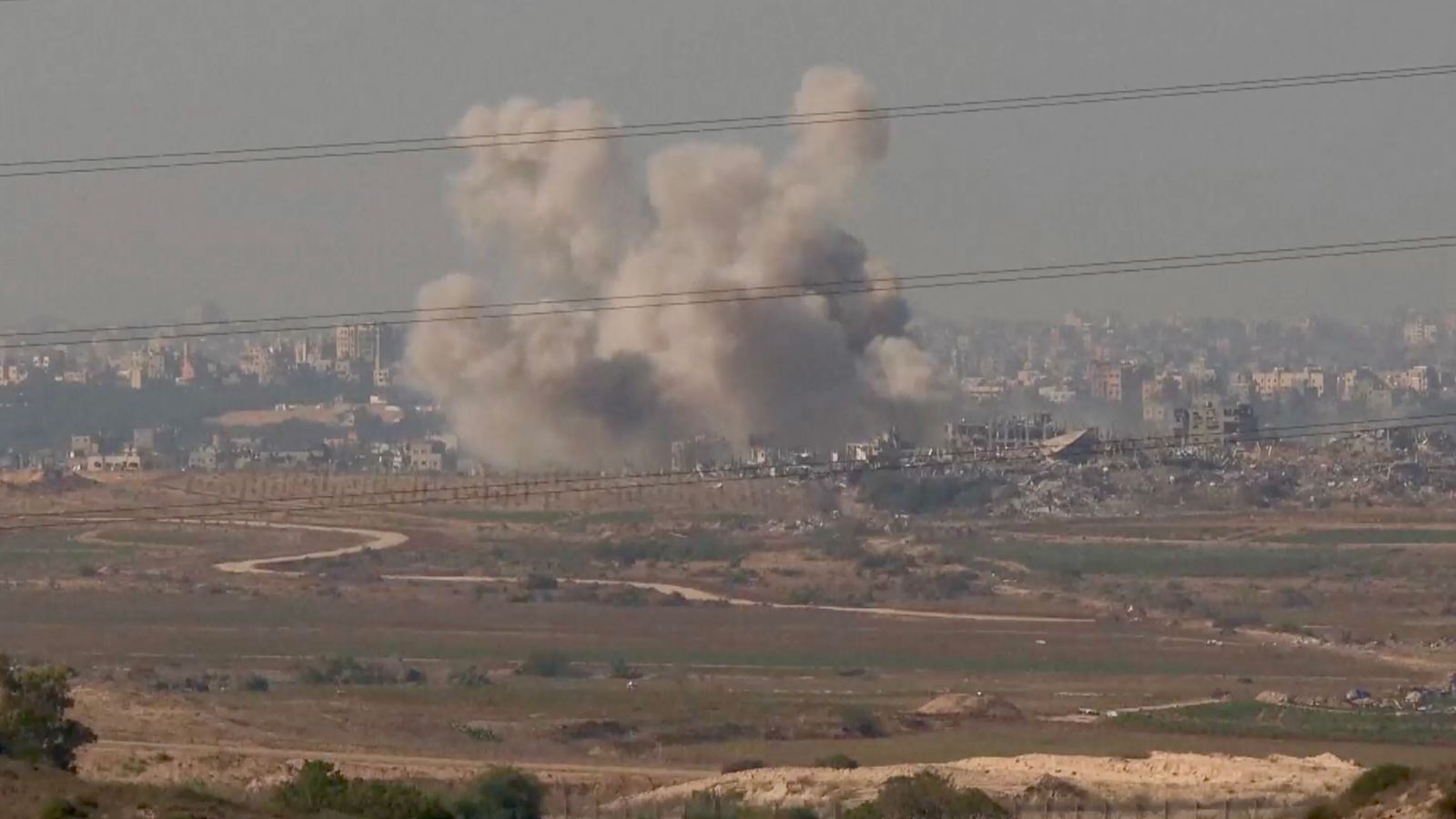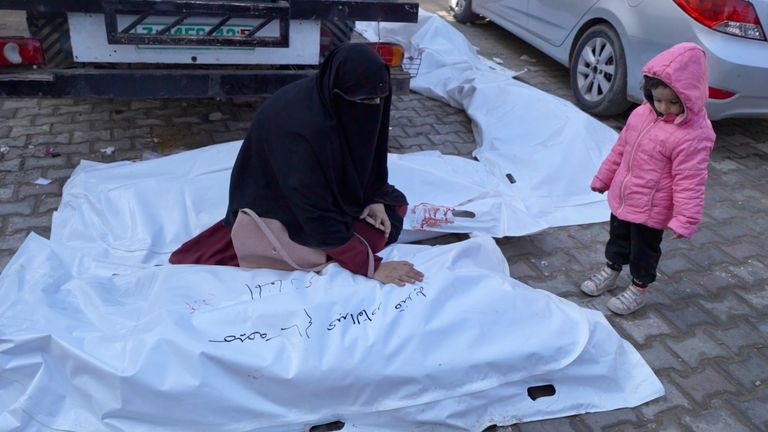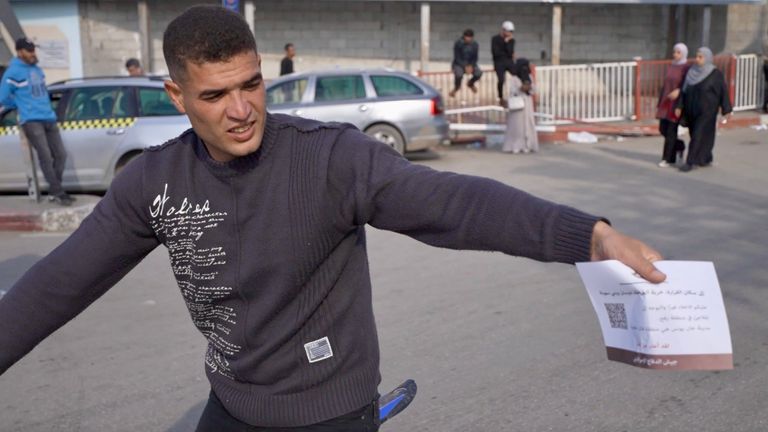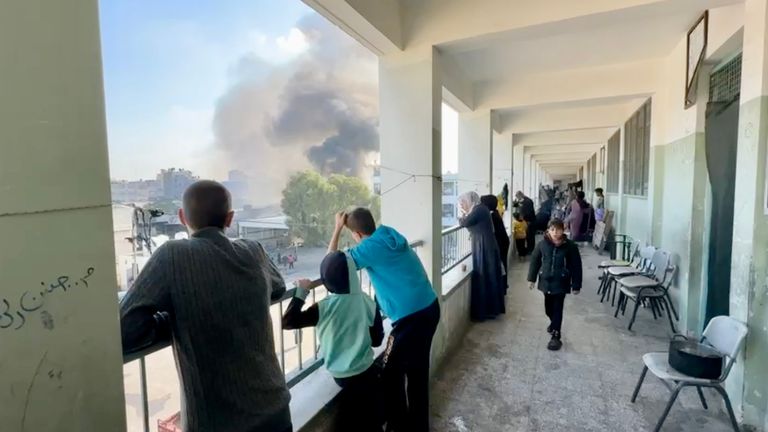The ceasefire between Israel and Hamas is over, and now Gazans have to flee once more for safety


Plumes of smoke rise once again into the clear skies over Gaza.
Artillery boomed and jets screamed through the skies above us as the skyline to the north of the strip filled with smoke as buildings and Hamas targets were pounded by the Israeli military.
Loudspeakers blared out warnings of incoming Hamas rockets.
Follow the Israel-Hamas conflict live as military operations begin again
We hit the ground as Iron Dome interceptors halted their path – explosions reverberated around the near-deserted streets of the Israeli town of Sderot.
The war has started again. It was always a matter of when not if.
Israel says the ceasefire was broken by Hamas firing the first rockets, while Hamas says Israel kept saying no to the offers they were making during negotiations to extend the ceasefire.
Either way, the war has resumed. And for civilians caught up in it, who started it again is probably of little consequence.
53-year-old Gaza resident Yousif Ligi thought the truce would hold. And then woke up to the bombs in his neighbourhood.
“There is no safe place, we do not know where to go. Wherever we go they bomb it. How long will this bombing continue? Find us a solution with whatever means,” he said, looking dazed.
Read more:
Can Israel destroy Hamas without killing thousands more?
Images of the Israelis who’ve been freed so far
Sky News teams filming in the north and south of the Gaza Strip sent messages saying the intensity of the bombing is as bad as it’s ever been.
Soon they began to send us pictures from inside Gaza.
It’s a familiar scene now.
Streets filled with smoke and dust as bombs begin to fall, people rushing to search for loved ones and neighbours trapped in the rubble, desperately scrabbling by hand.
Houses and apartment blocks smashed to pieces.
The bodies of the dead, shrouded in white, laid together.
In one scene a woman gently strokes the body of a relative, watched on by a little girl.


We don’t know who they are.
Inside the hospitals the staff struggle to deal with a new influx of injured from the bombardment. Gurney after gurney rushed into the emergency rooms.
The medical centres in Gaza are already stretched to breaking point.
With negotiations around extending the ceasefire deadlocked, in many ways it was inevitable hostilities would resume.
The question now though is what happens to the hundreds of thousands of people in the south.
This is the greatest concern for the international community.
Already there is a mass exodus further to the south.
Our team in Gaza filmed as people left the city of Khan Younis, many of them had already been forced from their homes by the fighting in the north at the start of the war.
Some left by horse and cart, others in cars packed full carrying entire families – and any possessions that can cram on board.
Others reduced to escaping by foot.
One displaced Gaza resident, Sana Abdulkarim, walking with her sons and daughters, told us they feel “lost”, and don’t know where to find safety.
“We are scared that what they have done in the north, they will do in the south as well,” she said.
The family plans to go to Rafah, on the border with Egypt.
“We can’t find shelter anywhere else, where shall we go? We don’t know where to go. We will go to the first school, we don’t have to be inside, we can sit in the playground, what else can we do? What else can we do?”
In conflicts like this, the importance of schools as safe zones is inestimable.


The IDF has been dropping leaflets with a QR code that links to an interactive map that has Gaza divided into block numbers.
They say the map will help residents navigate the war zone and evacuate safely.
But thousands remain in the north.
And at one school in the Jabalia refugee camp near Gaza City, our cameras filmed a fire caused by an Israeli airstrike.
It was next to classrooms now full of people seeking shelter and is far from the relative safety of the south.
As the fighting intensifies, it’s hard to imagine how people like this could possibly even move.

